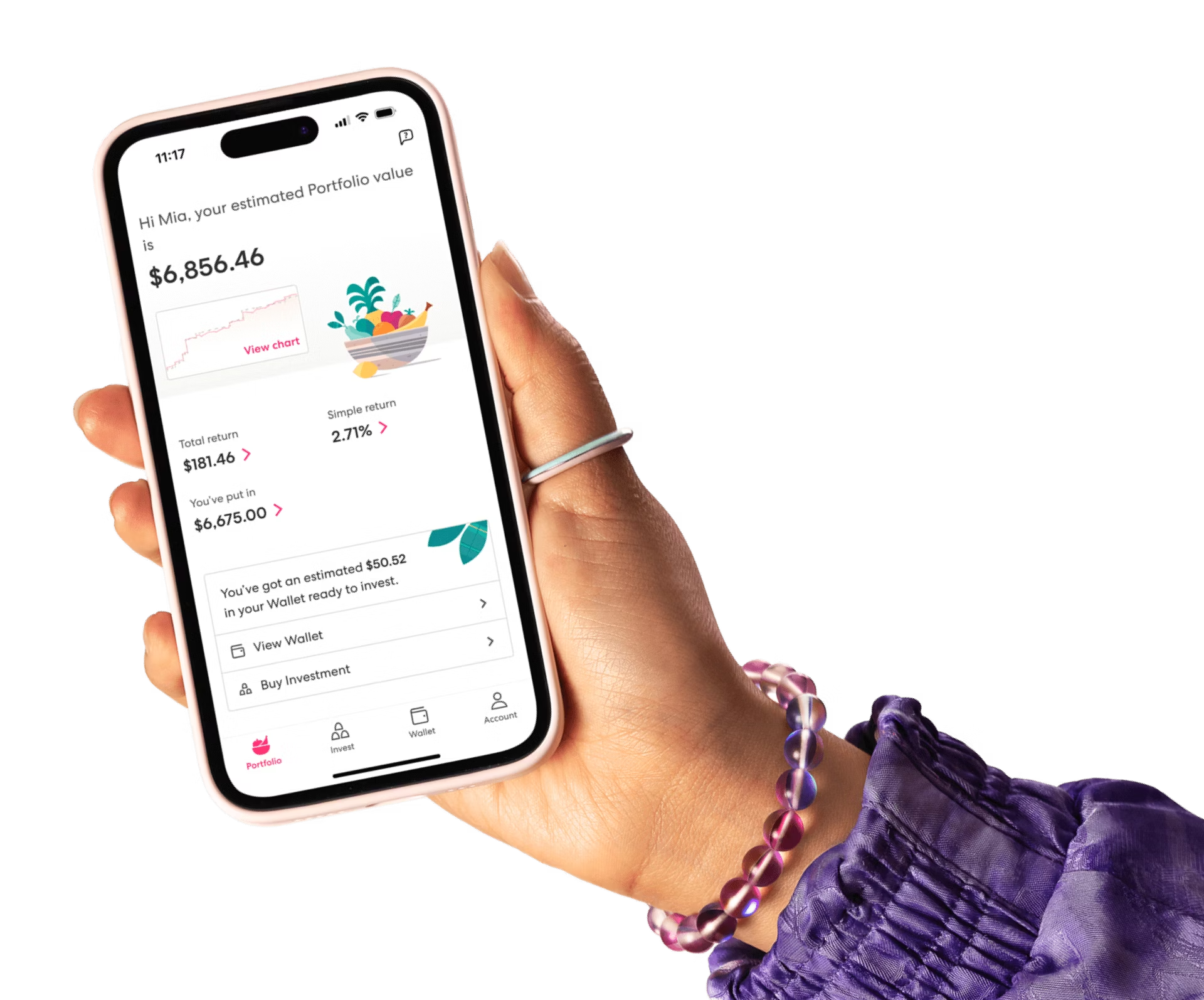What does volatility mean for my investments?
You might occasionally hear the share market described as ‘volatile’. But what does that mean? Is it good? Is it bad? Is it in between? Let’s get into what volatility is, and what it means for your investments.

What it says on the tin
A volatile investment is an investment that frequently changes in value by large amounts—up one moment, and down the next. Most investments have some volatility, but some investments are more volatile than others.
One easy way to see volatility is to look at an investment’s value on a line graph. Here’s the Smartshares NZ Bond fund, currently one of the least volatile investments on Sharesies:

That line graph is pretty much a flat line. Not very volatile at all.
Now, here’s a more volatile investment—the Smartshares US 500 fund:

That’s much more of a roller coaster!
As with most things investing, volatility is not really good or bad. Rather, volatile investments have some positive attributes, and some negative attributes. Let’s work through those.
Less volatile, more consistent
Here’s one side of the story: less volatility means more consistency. If you invest in something that’s not very volatile, then that investment is less likely to drop in value. If it does drop in value, it’s unlikely to be by very much. As you can see from the NZ Bond graph, a dollar invested a year ago would be worth the same amount today (leaving aside dividends for the moment).
More volatile, better returns
Here’s the other side of the story. Volatility goes in two directions—up and down. This can be a bit nerve-racking when a share’s value is going down, but it also opens up opportunity on the other side. If you invest $10 in a volatile investment, and that investment increases in value to $15 the next day, you’ve just made a 50% return in a day! The tradeoff is that something that can go up a lot in one day can just as easily go down a lot in one day.
This concept may look familiar because it’s closely connected to risk. In general, investments with higher volatility tend to be riskier than investments with lower volatility. That means they also tend to have potential for higher returns.
Volatility in your portfolio
Let’s use an example to show how you can manage volatility.
Imagine for a minute that you see a game at a carnival. Here’s how it works. You give a guy some money. He flips a coin. If it’s heads, you get 5x what you bet. If it’s tails, you get nothing. This is very volatile.
Now let’s say you have $5. You could bet it all at once. Heads, you get $25. Tails, you get nothing. Thanks for playing.
Here’s another option. Rather than bet the $5 all at once, you make 5 bets in a row, for $1 each. If you win once, you’ve made your money back. If you win twice, you’ve doubled your investment. And since the odds are 50%, that means it’s pretty likely that you’ll win at least once, and probably twice.
Back to investing
You might have figured out what we’re getting at here—dollar-cost averaging. Dollar-cost averaging is when you behave like the person in the second situation, and invest small amounts, regularly, over a long time period. When things go down, your investments may lose value, but when they go up, any investments you made in the down period will gain value. This helps to “smooth out” volatility and give you access to those bigger returns without taking as much risk.
Not all or nothing
One last thing to remember is that volatile investments and smoother investments are not mutually exclusive. You can diversify by putting some money into something volatile, and put some other money into something less volatile. If you combine this with dollar-cost averaging, you can make that volatility even smoother—and give yourself the best chance of those good long-term returns.
What to do?
As always, it’s up to you how you handle volatility. Your investment portfolio could be 100% volatile shares, 0% volatile shares, or somewhere in between. What’s more, you could invest $10 every week, $100 every 10 weeks, or (again), somewhere in between.
While volatility can be a roller coaster, if you have a nice long time horizon, we reckon you should jump on! Holding on to a well-diversified set of investments for a long time gives you a great chance of turning your money into more money—and at the end of the day, that’s what investing is all about.
Ok, now for the legal bit
Investing involves risk. You aren’t guaranteed to make money, and you might lose the money you start with. We don’t provide personalised advice or recommendations. Any information we provide is general only and current at the time written. You should consider seeking independent legal, financial, taxation or other advice when considering whether an investment is appropriate for your objectives, financial situation or needs.
Join over 800,000 investors



